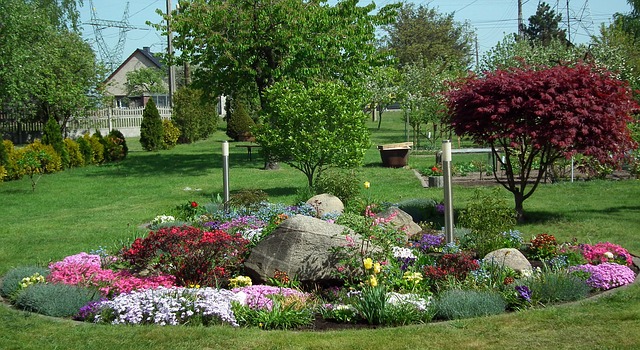Gardens are designed to give property owners and visitors a place where they can relax and be closer to nature. But no one will think about spending time outdoors if your garden is in poor condition, unhealthy and simply unsightly.
If you have a tired-looking patch of (what-used-to-be) green, here are some useful tips from garden and landscaping professionals steps and tips you can follow to bring it back to life:
-
Scarify the turf
If your garden is more brown than green and thus looks unhealthy and ugly, start by scarifying the turf.
Although the term may seem terrifying, scarifying only means raking your turf using a stiff, wire-tined lawn rake. You can also rent a mechanical scarifier for this task.
By scarifying the ground, you drag out thatch and moss. Thatches are partially dead horizontal shoots and leaves of grass which accumulate underneath the grass plants on the soil surface.
When they occur in patches, thatches cause a condition known as a “dry patch.” These patches resist water and keep it away from the grassroots. When not remedied, they will cause the grass to turn brown and give you a dry, grassless garden.
-
Aerate
Frequent heavy foot traffic, which often happens if you frequently turn your garden into an entertainment venue, causes the soil to compact. Compaction hampers root growth and prevents water from infiltrating the soil easily. This can cause the grass to dry and die out, and prevent new ones from growing.
By aerating your turf, you alleviate soil compaction. This, in turn, will help the roots grow deeply thereby giving you a lusher, more vibrant turf.
The best time to aerate is in the early or late spring or whenever the ground is moist enough. To carry out this gardening chore, push a garden fork into the ground to a depth of 10 to 15 centimetres at frequent intervals. You can also use a lawn aerating tool or spiker when aerating your soil.
-
Nourish your turf
To give your garden that lively look again, fertilise it. The fertiliser will encourage the growth of new grass and give you a flourishing, thicker turf. It also helps counteracts wear and prevent the growth of weeds.
But before you buy the biggest bag of fertiliser you see in the shop, have your soil tested first. This will help you choose the best type of fertiliser to use and how much to use.
Lastly, if your turf is brown and withered from dehydration, do not apply fertiliser yet. Wait for some new grass to grow before doing so.
Applying compost and mulch will also give your plants additional nutrients that will aid in their growth.
-
Grow new and take care of young plants
Give your garden more colour by growing new plants. Opt for native perennials since they are easier to grow and maintain. With such plants, you can be sure you will have colourful foliage that will enliven your garden all year round.
It will also work to your advantage to consider the usual pests that invade your home and garden. Grow plants that naturally repel them to save some money.
To ensure young plants grow healthily, water them at least twice a day, assuming there is no rain. Check if you can apply fertiliser as well so that they will get more nutrients.
-
Deadhead flowering plants
Deadheading a flower entails removing the flower from the stem of a plant or bulb. You can do this by pinching off the flower with your thumb and index finger or by using a pair of clippers or pruning shears.
Deadheading makes the plants look nicer and tidier in the garden. In addition, removing the flowers of annuals will extend their life. Some plants also produce a second flush of growth and flowers after being deadheaded and, as such, you will get more flora that will add brightness to your garden.
-
Add borders and edges
Finally, turn your tired-looking garden into something more interesting by adding borders and hedges. Edges created by borders, paving, hedges, paths, and long grass help give definition to the garden, making it appear fascinating and less boring.
Adding a path, a low hedge, and some stepping stones can also give your garden a more modern, fresher look.
Reviving your tired-looking lawn will take a lot of time, hard work, and even a bit of expense. But everything will be worth it if your garden becomes green, lush and vibrant again.

